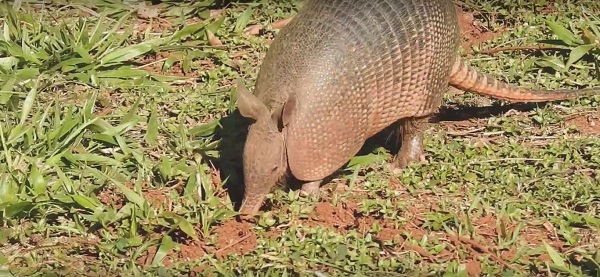Like any other animal, armadillos have a special diet that consists of various organisms throughout nature. Armadillos carefully choose habitats that suit them and their needs such as their dietary needs. These creatures can eat a wide range of foods, but prefer to consume certain organisms most of the time. This is similar to the patterns of many humans. Humans are capable of eating numerous things, but exhibit patterns dependent on a diverse range of things such as culture and nutritional considerations. While armadillos do not live lives that are as sophisticated as humans, they still display certain patterns in relation to what they eat.

The pattern exhibited by armadillos is that they eat insects and other invertebrates more than anything else. More specifically, ninety percent or more of an armadillo’s diet consists of insects and other small invertebrates. Less than ten percent of an armadillo’s diet is made up of plants. However, studies have been conducted showing that armadillos can eat things like fruits and vegetables too. Armadillos are also known to consume smaller amphibians and reptiles.
The rough texture of the armadillo’s tongue aids it in its quest to capture and eat its prey. Other anatomical features of the armadillo such as the claws and the feet assist in catching prey. In addition, the armadillo uses its claws and feet to dig holes in the ground in order to access its prey more effectively. This digging results in armadillos being labeled as pests. The armadillo’s heightened sense of smell serves as an effective means of locating food. Armadillos usually hold their noses closer to the ground in order to enable themselves to better use their sense of smell.
Due to the diversity of armadillos and the diversity of their habitats, their sizes, behaviors, and individual food sources can vary. Nine-banded armadillos are known to grunt while searching for their food. Nine-banded armadillos are also known to eat carrion on occasion. These same armadillos do not chew smaller prey, but chew prey that is larger in size. When eating smaller prey like ants, they have been observed to roll around on the ground in order to get the ants off of their bodies. During the wet season in Brazil (their native habitat), three-banded armadillos tend to eat more fruits. At zoos, three-banded armadillos are fed a mix of insects and fruits. In cooler climates, armadillos in general can eat the eggs of various animals.
To summarize, armadillos are diverse animals and their behaviors can be different depending on where they live and what species of armadillo they are. On average, armadillos enjoy consuming insects and other invertebrates more than they enjoy consuming anything else. In spite of this, armadillos are capable of being omnivores and of consuming other animals as well as vegetation. Observing the habits of these animals, especially their dietary habits, is interesting. The variations among different species of armadillos is something that will catch the eye of anyone with a love for the animals of our world.
Go back to the
How Do You Get Rid of Armadillos home page to read more about What do armadillos eat?